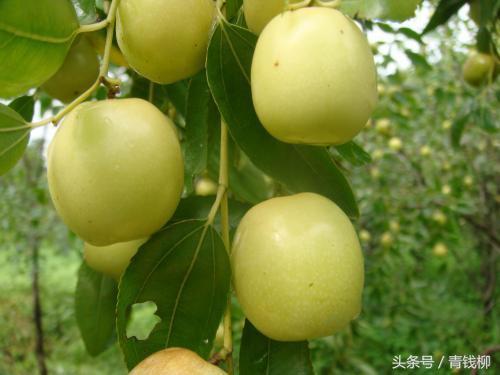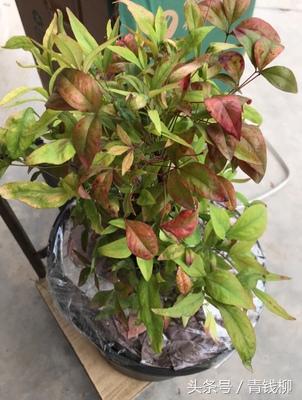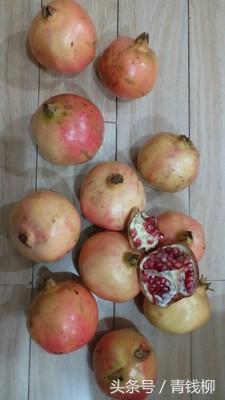Introduction performance and cultivation techniques of a New early ripening fresh Jujube Variety Wanzao No.3

Introduction performance and cultivation techniques of a New early ripening fresh Jujube Variety Wanzao No.3
Wanzao No. 3 is a new southern fresh jujube variety selected by the Institute of Horticulture of Anhui Academy of Agricultural Sciences from the local jujube germplasm resources in Anhui Province. it was approved by Anhui Forest Variety approval Committee in August 2013. it has high economic and nutritional value. In recent years, Anhui Province has stepped up the development of jujube industrial economy, seized the opportunity of the national policy of returning farmland to forest, and vigorously adjusted the planting structure. Jujube cultivation area has expanded rapidly and has become the local pillar industry and leading industry.
Guanbuqiao Town, located in the west of Congyang County, is a subtropical warm and moist monsoon climate zone with four distinct seasons, mild climate, abundant rainfall and sufficient light. The annual average temperature is 16.5 ℃, the average annual precipitation is 1 326.5 mm, the precipitation in winter is less, the rainfall is concentrated in summer rainy season, the annual average sunshine hours is 2 065.9 hours, and the frost-free period is 251 days. Wanzao No. 3 was introduced from the Institute of Horticulture of Anhui Academy of Agricultural Sciences in 2013 for trial planting in Guanbuqiao Town, Congyang County. After 4 consecutive years of observation, it was found that this variety grew well in Congyang County. It shows the advantages of early maturity, early fruit, high yield, high quality and strong adaptability, which can be popularized as a new variety of fresh jujube. The introduction performance and cultivation techniques of Wanzao No. 3 in Congyang County are summarized as follows for reference.
1 feature characteristic
1.1 Botanical traits
1.1.1 branches. The tree posture is more developed, the trunk is medium, the tree is cylindrical, the backbone branches are open, the angle is more than 45 °, and the tree potential is moderate. The cracks in the trunk epidermis are strip-shaped, and most of them are cut off without transverse cracks. the longitudinal crack length is much longer than the width and is easy to peel off. The curvature of the secondary branch is small. Acupuncture is well developed.
1.1.2 leaves. Mature leaves ovate-lanceolate, green, flat, bright color. The leaf tip is obtuse, the leaf base is round, the leaf margin is blunt-toothed.
1.1.3 flowers. The flowers are in diurnal bloom. Each inflorescence bears 6-8 flowers, the number of flowers is medium, the buds are light yellowish green, with 5 stamens, sepals yellowish green, pentagonal.
1.2 main characters of fruit
The fruit is uniform in size and conical in shape. the average weight of single fruit is 13.48 g and the maximum weight of single fruit is 18.6 g. The fruit shoulder is flat, the fruit top is flat. The fruit is ochre red when it is fully ripe (brittle ripe stage), with smooth surface, thin peel, small spot, medium density and excellent appearance. Pedicel shallow and broad, sepals deciduous, columnar deciduous. The nucleus is oval and nucleated, and the nucleus contains full kernels. The flesh is light green and white, the flesh is fine and crisp, the pulp juice is medium, the taste is sweet and slightly sour, the fruit has no peculiar smell, good taste, high quality, suitable for fresh food. The content of soluble solids in the brittle ripening stage was 27.4%, and the edible rate was 95%.
1.3 Biological characteristics
Should be planted in fertile land, strong growth, jujube head color for reddish brown, less wax layer. The average length of secondary branches is 28.33cm, and the average number of nodes is 7. The curvature of the secondary branch is small, and the acupuncture is not developed. The average length of jujube hanging is 20.29 cm, the average number of leaves is 14, and the distance between internodes is 1.45 cm. The average number of hanging jujube stock is 2.75. The stock suspension rate is 2.75. This variety has the advantages of medium flower quantity, high self-setting rate, stable fruiting habits and no obvious phenomenon of big and small years. The three-year-old tree began to bear fruit, and the yield, height and crown diameter of the three-year-old tree were about 5 kg, 2.5 m and 3.0 m respectively. The fruit drop before harvest is light, and the phenomenon of big or small year is not obvious.
2 performance of introduction
2.1 Phenological phase
In Congyang area, Anhui Province, Wanzao No. 3 began to sprout at the end of March, sprouted at the beginning of April, began to spread leaves in mid-April, showed buds in early May, bloomed in mid-May, bloomed in late May, entered the white ripening stage in mid-July, could be harvested in early August, and entered the full ripening stage in late August. Wanzao No. 3 is an early-maturing fresh food variety, the fruit development period is about 80 days, and the leaves begin to fall in late October.
2.2 adaptability and resistance
Wanzao No. 3 has strong adaptability and can grow normally in different types of soils, such as general sandy soil, clay soil, silt plus clay and so on, and the neutral sandy loam is the best. In Congyang County, it showed early fruit, good fruit quality, high yield, stable yield, drought resistance, higher resistance to jujube rust, general resistance to jujube anthracnose and jujube fruit shrinkage, and easy to crack fruit in case of rain in the brittle ripe period.
2.3 Productivity
The plant spacing was 1.5m × 3.0m and the density was 2220 plants / hm 2 by high density planting. In the second year of planting, the plants began to bear fruit, and in the third year, the average yield was 2.1 kg/ plants, the highest was 5.3 kg/ plants, the average yield was 4662 kg/hm 2, and the average yield of four-year-old trees was 5.4 kg/ plants, up to 8.5 kg/ plants, and the average yield was 11,988 kg/hm 2.
2.4 Major defects
First, Wanzao No. 3 is easy to flower, high yield and easy to set fruit. Under the condition of high yield, the fruit is smaller and the fruit quality is greatly reduced. Attention should be paid to flower and fruit thinning and yield should be controlled. The general yield should be about 15 t/hm 2. Second, the fruit is easy to crack in case of rain in the brittle ripe period. The brittle ripening period of this variety is in the first and middle of August. In the areas with more Rain Water in this period, attention should be paid to fertilizer and water control to prevent fruit cracking.
3 cultivation techniques
3.1 Seedling propagation
Grafting and root tillering were used to propagate. Grafting propagation is suitable to use wild sour jujube as rootstock, or copper money tree or wild sour jujube as rootstock. The plots with high content of organic matter and thick soil layer should be selected for cultivation.
3.2 colonization
Grafted seedlings were used in production, the row spacing of high density planting garden was 1 × 2 m × 3 × 5 m, and that of conventional cultivation was 3 × 4 m × 4 × 6 m.
3.3 plastic pruning
The tree shape adopts happy shape, early opening angle, very early crown expansion and balanced tree potential. In summer pruning, attention should be paid to flower and fruit thinning, yield should be controlled, jujube heads should be removed before flowering, and the general yield should be about 15 t/hm 2. If the yield is on the high side, it will lead to smaller fruit and lower quality. When the fruit enters the brittle ripening period, attention should be paid to fertilizer and water control to prevent fruit cracking.
3.4 Disease and pest control
The common diseases in production are jujube mad disease, jujube fruit shrinking disease, jujube rust disease, jujube anthracnose and jujube split fruit disease, and common pests are jujube gall midge, red spider, peach heart borer, jujube armyworm, beetle and green bug, etc., which should be controlled scientifically in order to improve the yield of jujube. First, reasonable pruning, cutting off disease and insect branches, removing dead branches and leaves, scraping off trunk old skin and disease spots, and concentrated burning or deep burial; second, strengthening cultivation management, improving ventilation and light transmission conditions of trees, and improving their own disease resistance; third, using yellow board, blue board, frequency vibration insecticidal lamp, sugar and vinegar solution, trunk entanglement and artificial capture and other methods to trap and kill pests Fourth, we should select chemical pesticides with high efficiency and low toxicity, low residue and light lethality to natural enemies, advocate the use of biological and mineral pesticides, and pay attention to the alternate use of different kinds of pesticides.
- Prev

Propagation, cultivation and Management techniques of Garden Flower seedlings
Techniques of propagation, cultivation and management of garden flower seedlings the reproduction, cultivation and management of flower seedlings is not only the basis of landscaping construction, but also an important part of landscaping. The demand for flower seedlings in garden construction is increasing.
- Next

Causes of Frost injury and Anti-freezing measures of soft seed Pomegranate in Western Henan Province
Causes of Frost injury and Anti-freezing measures of soft seed Pomegranate in the West of Henan Province Pomegranate is one of the favorite fruits and is listed as a treasure in fruit because of its rich nutrition and beautiful meaning. In recent years, soft seed pomegranate is regarded as one of the treasures in the market.
Related
- Wuhan Hospital Iron Tree Blooming Result Was Instantly Frightened by the Gardener Master
- Which variety of camellia is the most fragrant and best? Which one do you like best?
- What is the small blue coat, the breeding methods and matters needing attention of the succulent plant
- Dormancy time and maintenance management of succulent plants during dormancy
- Minas succulent how to raise, Minas succulent plant pictures
- What are the varieties of winter succulent plants
- How to raise succulent plants in twelve rolls? let's take a look at some experience of breeding twelve rolls.
- Attention should be paid to water control for succulent plants during dormant period (winter and summer)
- Watering experience of twelve rolls of succulent plants
- Techniques for fertilizing succulent plants. An article will let you know how to fertilize succulent plants.

